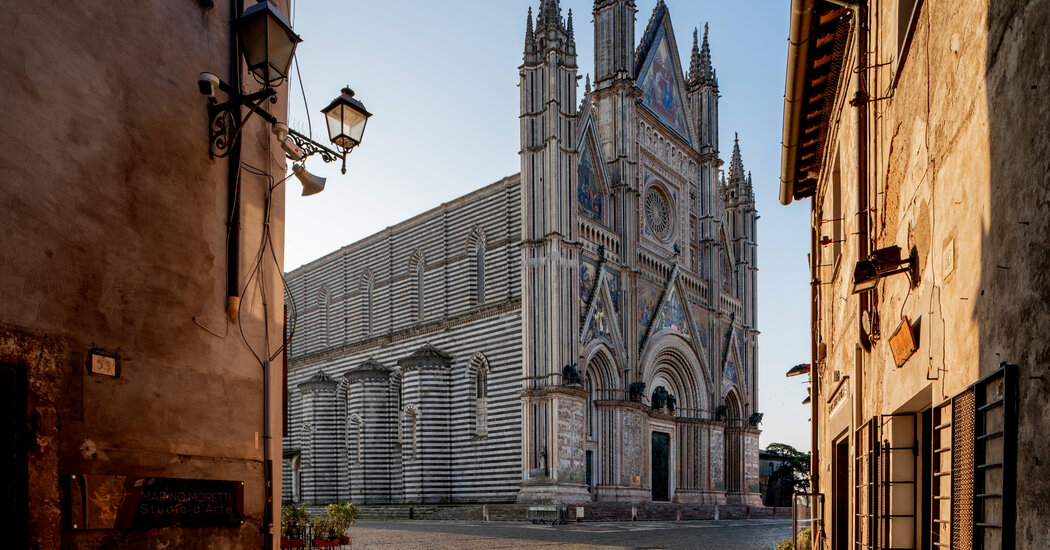Calling itself the green heart of Italy, the landlocked region of Umbria is known for its truffles and olive oil, roast pork and sausage, wine and cheese.
It also has great cultural riches — many of them in hill towns like Orvieto, Perugia and Assisi. You can admire the brilliant reliefs and mosaics on the facade of the medieval Cathedral of Orvieto, see Giotto’s amazing frescoes in the Basilica of San Francesco in Assisi (the first inklings of Renaissance art) and explore the National Gallery of Umbria in Perugia, with art going back to the 13th century.
The cultural and culinary treasures of the region can easily be reached by train from Rome, which lies just to the south, or from Florence, to the north. From Rome, a logical starting point is Orvieto, only a little over an hour away, with trains available about once an hour. Some leave from the main Termini station; others from the massive multilevel Tiburtina station, easy to get to on the Rome subway. Expect to pay between 9 (about $10) and 17 euros (about $18.50) for a ticket. From Florence, do the trip in reverse, starting in the more northern towns of Assisi and Perugia, and continuing on to Orvieto — from which you can easily continue on to Rome.
Umbria is hill country, and at each town, you’ll need to get up the hill from the train station. Each town solves this in a slightly different way. In Orvieto, a funicular (1.3 euros) will take you up to the town, which sits on a rock cliff, overlooking the surrounding green valley and distant hills.
Rising above the town’s highest point are the towers of the massive cathedral, dedicated to the Assumption of the Virgin Mary, and constructed over several centuries, starting in 1290, to commemorate a local miracle: the bleeding communion host in the nearby town of Bolsena in 1263. The stained altar cloth is preserved in the cathedral today.
The upper facade of the Orvieto cathedral is resplendent with mosaics on a golden background, originally dating from the 14th century, but reworked and altered over the intervening centuries. At eye level are four giant marble bas reliefs, with scenes from the Old and New Testaments, fabulous masterpieces of sculpture and biblical storytelling.
An excellent map, available at the cathedral, will help you find the art treasures inside. The chapel of the Madonna of San Brizio has ceiling frescoes by Fra Angelico and Benozzo Gozzoli. Another Tuscan genius, Luca Signorelli, completed the ceiling and then painted the…
Click Here to Read the Full Original Article at NYT > Travel…
